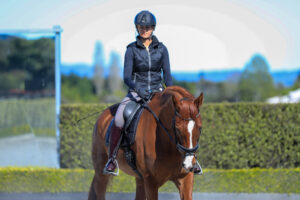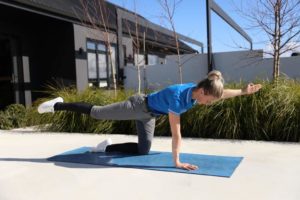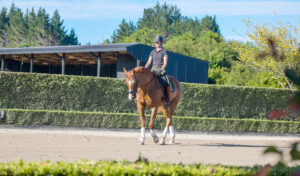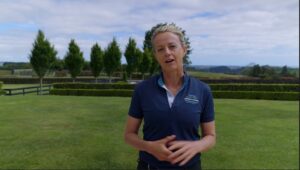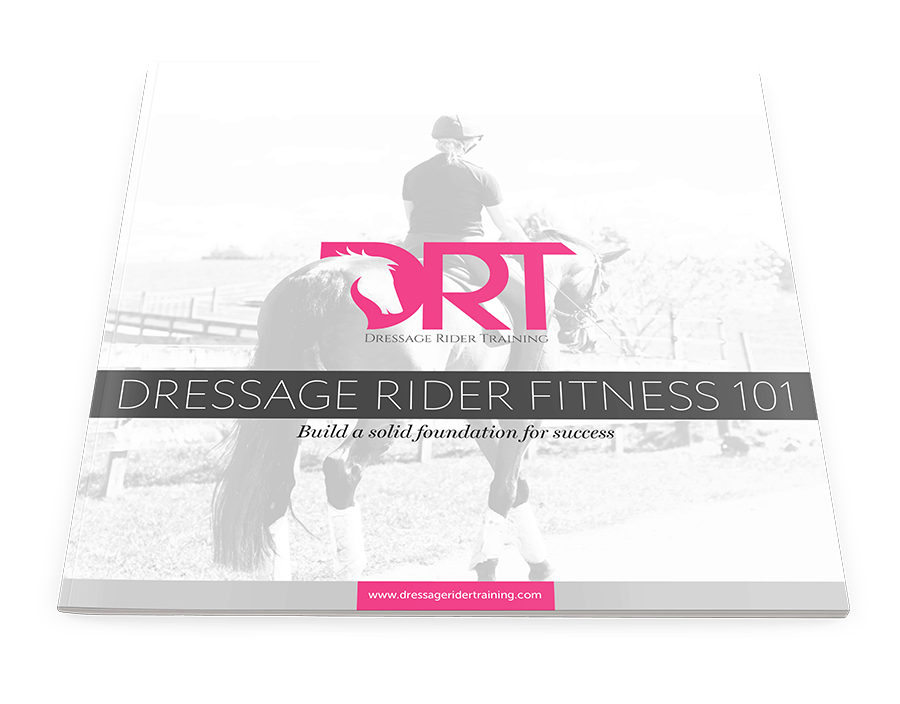Joint Pain In Dressage Riders
Even though a dressage rider creates the illusion of being still the body does an incredible amount of movement to achieve this. This movement can become incredibly hard if you are experiencing joint pain.
As riders the joint pain is often felt in the knees, hips and lower back but can be experienced in any joint because when we are riding the body is absorbing and transferring the horses movement through our body. So the joints and muscles act as a shock absorber for the horse’s movement. Often what happens is riders create tension in certain areas which inhibits that movement to be absorbed. This tension could be from nerves, flexibility or just poor alignment and the wrong muscles activating. This then creates soreness and even more tension.
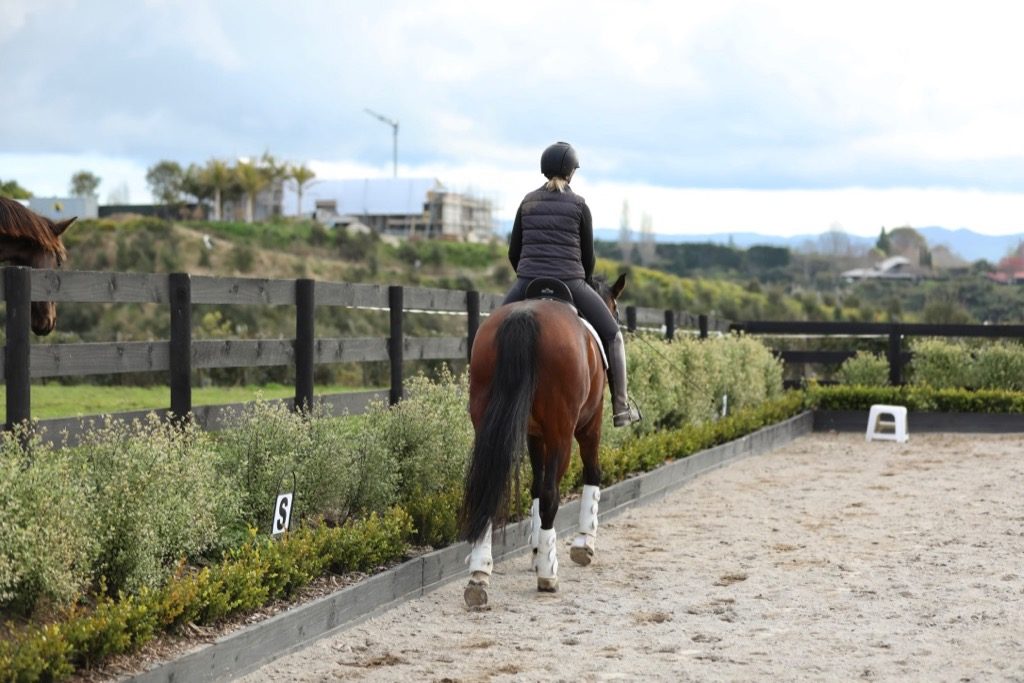
Understanding Joint Pain
When we are riding it requires a combination of both strength and suppleness. I like to call this fluid elastic strength. It requires the right muscles to switch on to stabilize the body in balance and create correct alignment and other muscles to let go and shock absorb. If you switch off the wrong muscles and create tension in others you are then asking the wrong muscles and ligaments to absorb the horses movement and they may not be designed for such movement. For example if your correct abdominals aren’t switched on and your hips are, you are asking your hips to stay still and your torso to flop around. This will cause your back and hips to receive more of the force and can cause soreness in these areas.
When we correctly activate our core and allow our hips to open and close with the horses movement we prevent undue wear and tear. The opposite however is a recipe for soreness. Now joint pain can be either acute or chronic. Often felt through either swelling or tenderness to a specific area. In order to allow a joint to move correct in the right range of motion it requires the muscles around it to support it in that position. When a joint is stable and correctly aligned it can move freely and fluidly to absorb the horses movement.
Creating Correct Alignment
As dressage riders you would of heard the term independent seat used and when you create the feeling of a deep seat and plugged in seat bones with open and free hips, you get to truly experience what this term means. In order for this to happen and to create a deep seat we need our abdominals, back muscles, shoulder muscles, quads, hamstrings and calves to all be working correctly. When we lack the flexibility in any of these muscle groups it can create a blockage with can cause the rider to either have trouble staying balanced in the saddle or have problems absorbing the horses movement and create wear and tear in the wrong places.
When we don’t switch on the correct muscles and loosen the others we can’t correctly align the body and this then creates a cycle of tension. This can cause the rider to bounce, feel unstable and just not comfortable or confident when riding. They then tense up the the wrong muscles, the stress causes others to shorten further and all of this then has a negative impact on the horse, causing the horse to respond back with more tension. This cycle doesn’t allow the tendons, ligaments and muscles to remain supple enough to move with the rhythm of the horse.
Its important to understand how stress responds in the body. You see when a rider is fearful or stressed this can cause certain muscles to activate automatically. In particular our psoas muscle which naturally shortens when we are tense, nervous or anxious. When this muscle and others get activated this can create a rigid and tense rider while at the same time shortening our hip flexors. So learning to create softness even when we are nervous and learning the ability to let go in certain areas even when we are nervous can really help improve your riding and not to mention how joints play there role in that circumstance.
Preventing Joint Pain
So in order to prevent and improve joint pain its about improving strength of the correct muscles to create proper alignment to allow joints to move within there correct range of motion. It is then also about creating flexibility and mobility with those joints also. This helps protect from wear and tear when the force of the horses movement is transferred through that joint. Think of it this way, our knee is a hinge joint it doesn’t move sideways, just front and back but if the muscles don’t support it to prevent any sideways action from the horses movement we can create undue stress in that knee from continual aggravation in a range that its not supposed to move in.
So by spending time to strengthen your quads and hamstrings with both abduction and adduction exercises along with exercises to improve your core stability and posture you will be ensuring your alignment is correct and prevent wear and tear. You see dressage is about flexibility and mobility in certain areas to help you keep that nice balanced, supple position and strength to keep you properly aligned with the horses movement.
Improve your rider biomechanics and alignment to help prevent wear and tear on your joints. When you take care of your body as much as your horses this is when you will be able to keep enjoying your riding for many many years to come. Check out our Dressage Rider Training program, everything to help you prevent joint pain and become a fitter and more balanced rider. Learn more here.
More articles
Dressage Rider Training Program
Join other participants on our 12-week 'step-by-step' online rider
training program. Improve the 5 components of your riding.
Only available 3x per year.
see full details & register your interest
